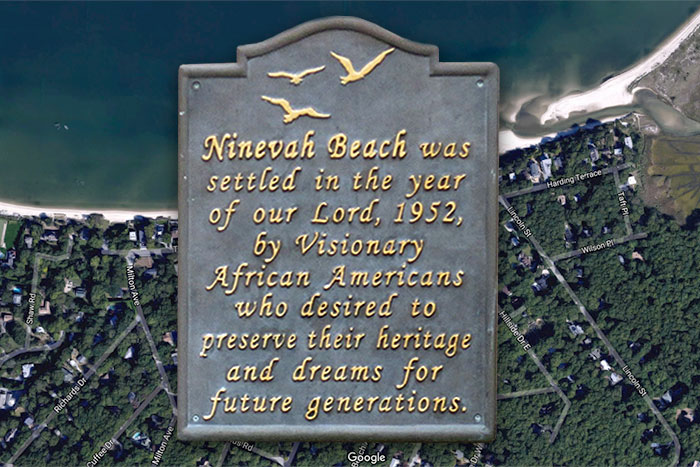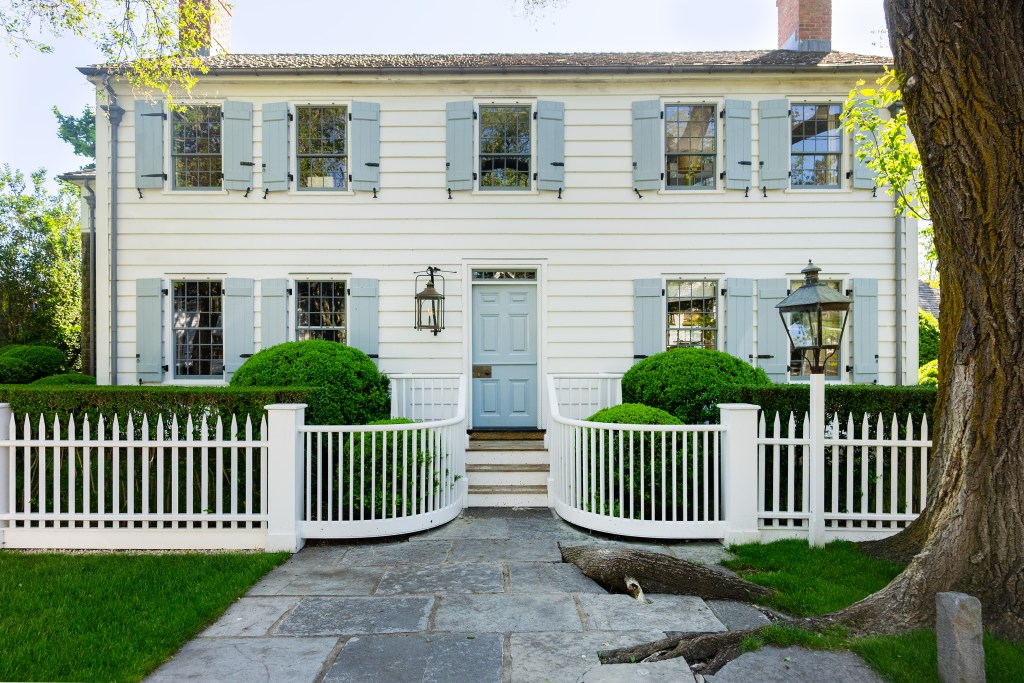Ninevah, Etc. – Historic Section of Sag Harbor Under Siege

One time when I was in college in the late 1950s, someone told me that many of my college friends were going downtown to the center of town to demonstrate for civil rights.
I went with them. The demonstration was against the Woolworth 5 and 10 cent store in Rochester, New York, which had in it a lunch counter where African-Americans were not permitted to sit.
I spent a good part of that afternoon, perhaps four hours, silently walking back and forth in front of the store with my friends, carrying a sign that read SEGREGATION IS WRONG. I had not written that sign. Others had. We were photographed, heckled, cheered on, watched over by the police. I was 19 that year and knew inequality was wrong. But segregation? I spent a long time thinking about that sign as I walked. Perhaps segregation is all right, if schools and roads and parks are equal in everything. Some people of a feather do like to stick together. Others in a group like to fly away—and then like knowing they can always come back to where they came from. But I just thought about that, and didn’t say anything about it.
The memory of that day came to mind today when I learned there is a “hostile takeover” effort going on here in the Hamptons in an African-American residential enclave in Sag Harbor that rests between Hampton Road coming into town and the bay beach to the north.
This community has signs announcing its presence on the road that leads into it. It is not one enclave but three that blend seamlessly one into the other. One is called Ninevah, the next is called Azurest and the third is called Sag Harbor Hills. These communities consist of small, well-put-together homes, with front lawns, picket fences, backyards and cars in the driveway. And as it happens, it is populated almost entirely by African-Americans, a mixture of local workers and city people who come out in the summertime. They were steered here by circumstance. In the 1950s, African-Americans were not able to get mortgages. And African-Americans were not welcome in much of white America. And so they were urged into these communities because that was where they were allowed to buy and move in.
The people in these communities, however, have always been house-proud. Quite a few climbed the ladder of economic success. Their prosperity shows in their homes. And who knew this one would turn out so well? The communities even end on the bay at a beach.
Colson Whitehead, now a bestselling author, grew up summering in Ninevah, Etc., as I will call it. His fourth book was Sag Harbor, about his childhood there, riding his bike with his friends, going to the movies or the beach or getting into some sort of trouble or other for which his parents made him pay.
Now, however, something rather alarming is going on. To the larger community, Ninevah, Etc. now qualifies as an undervalued property ripe for a hostile takeover. This is the “Hamptons,” after all.
It’s been underway for about six months. During that time, six or seven properties have been sold to mysterious individuals who wish to hide behind a corporate veil. The purchasers’ names, something innocuous like “Big Hills,” end in LLC (Limited Liability Corporation). The houses they are hoping to build on these small lots, many already in the planning stages, are loaded with swimming pools, tennis courts, six or seven bedrooms and hedgerows to keep prying eyes out. These properties, if built, will be grand mansions fit for those with seven-figure incomes.
Also during this time, there have been well-dressed people going around, knocking on doors and identifying themselves not as prospective new neighbors wishing to say hello but as agents for unidentified others who want to make offers for the home they are visiting. These homes have not been put on the market. Some have said $600,000 is the price being offered.
In a recent New York Times story, a longtime local resident of Ninevah, Etc., sitting on his porch, was quoted as saying, “I don’t know Mr. and Mrs. LLC.”
The Ninevah communities have been visited by or been home to Harry Belafonte, Lena Horne, Colin Powell, B. Smith and a whole lot of other people. They should, arguably, be protected for the local residents, just as the nearby Eastville community has been pursuing a historic preservation designation.
I’m told that the Village Board, now alerted, is considering designating Ninevah Etc. as a historic district. There are discussions to severely limit house size.
I have a further idea. The treasure here, black or white, is neighborliness. Limit fence heights to four feet on the sides. Then declare that foliage too thick to see through shall be considered a fence. It should be a RIGHT for people who want to live in a community such as this to be out front or in the side yards of their homes talking to their neighbors about this or that without anything obstructing it. People can see in (unless you close the curtains.) The occupants can see out.
I believe that, in the end, with the help of some absent bushes, Ninevah, Etc., can be saved.



